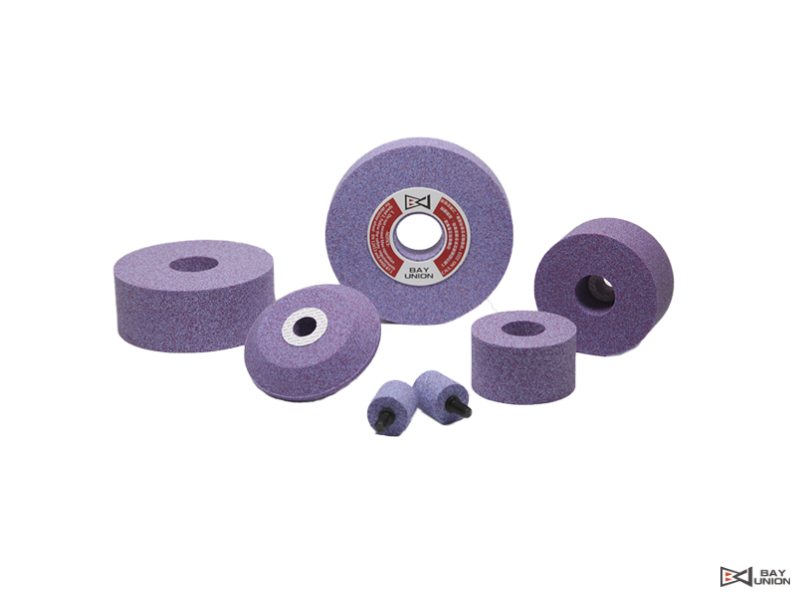
How to Choose a Grinding Wheel for Different Types of Metal?
Grinding wheels are an indispensable tool in the metalworking industry. They are used to smooth and shape metal pieces with precision and accuracy. The key to achieving the best results when using a grinding wheel lies in selecting the right type of wheel for your specific needs. There are many different types of metal and alloys used in modern industry, each with its own unique properties and characteristics. In this article, we will explore how to choose a grinding wheel for different types of metal, and provide useful tips on how to get the most out of your grinding wheels.
1. Consider the Type of Metal You Need to Grind
The first step in choosing a grinding wheel for different types of metal is to consider the metal itself. The hardness, toughness, and chemical composition of the metal will determine the type of grinding wheel you need. For example, if you are grinding soft metals like aluminum or copper, you will need a grinding wheel with a higher friability index. This will help the wheel to break down and release new grains, preventing the wheel from becoming clogged with metal particles.
On the other hand, if you are grinding hard metals like steel or titanium, you will need a grinding wheel with a lower friability index. This will help the wheel to maintain its shape and cutting ability for longer periods of time. In general, harder metals require harder grinding wheels, while softer metals require softer grinding wheels.
2. Choose the Right Abrasive
The next step in choosing a grinding wheel for different types of metal is to select the right abrasive. There are many different types of abrasive materials used in grinding wheels, each with its own unique properties. Some common abrasive materials include aluminum oxide, silicon carbide, and diamond.
Aluminum oxide is one of the most commonly used abrasives in grinding wheels. It is a versatile material that can be used to grind a wide variety of metals and alloys. Silicon carbide is a harder abrasive that is typically used for grinding harder metals like cast iron and stainless steel. Diamond is the hardest abrasive material available, and is used for grinding very hard materials like carbide and ceramics.
3. Consider the Grit Size
The grit size of a grinding wheel refers to the size of the abrasive particles used in the wheel. Grinding wheels with larger grit sizes have coarser abrasive particles and are used for rough grinding or heavy stock removal. Grinding wheels with finer grit sizes have smaller abrasive particles and are used for finishing or polishing.
When choosing a grinding wheel for different types of metal, it is important to consider the grit size of the wheel. For example, if you are grinding soft metals like aluminum or copper and need to remove a lot of material quickly, you may want to choose a coarse grit wheel. However, if you are grinding harder metals like steel or titanium and need a smooth finish, you may want to choose a finer grit wheel.
4. Choose the Right Wheel Shape
The shape of the grinding wheel also plays an important role in determining its performance. There are many different wheel shapes available, including straight wheels, cylinder wheels, and dish wheels. Each shape has its own unique properties and is best suited for specific types of grinding applications.
Straight wheels are the most common type of grinding wheel, and are used for general purpose grinding. Cylinder wheels are used for grinding the inside surfaces of cylindrical objects, while dish wheels are used for grinding the outside surfaces of cylindrical objects. When choosing a grinding wheel for different applications, it is important to consider the shape of the wheel and how it will interact with the metal being ground.
5. Consider the Grinding Machine
Finally, it is important to consider the grinding machine when choosing a grinding wheel for different types of metal. The speed and power of the grinding machine will play a determining role in the performance of the wheel. It is important to select a wheel that is compatible with the grinding machine being used.
In general, harder metals require higher speeds and heavier pressures to grind than softer metals. The grinding machine must be capable of providing the necessary speed and pressure to achieve the desired results. It is also important to choose a grinding wheel that is compatible with the machine's spindle size and mounting flanges.
Conclusion
Choosing the right grinding wheel for different types of metal is vital for achieving the best possible results. Consider the type of metal, the abrasive material, the grit size, the wheel shape, and the grinding machine when making your selection. With the right choice of grinding wheel, you can achieve precision and accuracy in your metalworking projects. At Bay Union, we offer a wide selection of grinding wheels for different types of metal and for a variety of grinding applications. Contact us today to learn more about our products and services.
